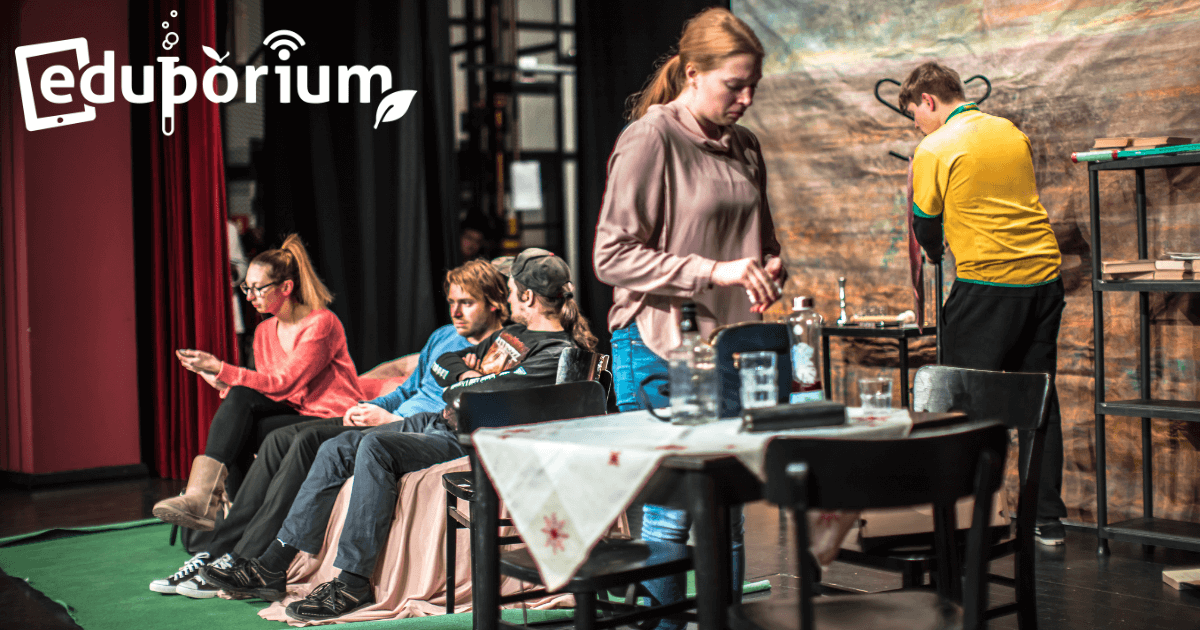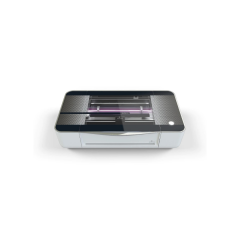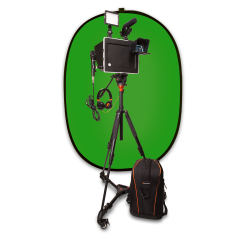Initially, it may seem like STEM tools don’t mesh with the theater arts—but that’s why the “A” was added to STEAM in the first place. Integrating the arts with science, technology, engineering, and mathematics means students get new opportunities for building their creative thinking skills and discovering passions. As STEAM solutions become more prevalent in the classroom, including in arts and humanities classes, we’ve pinpointed several of the most helpful tools for theater students. Don’t worry, we’re not trying to replace all the actors with robots. But adding 3D printers, maker tools, or even coding devices to theater instruction could open the door (or curtain) to advancements in production and student involvement.
3D printing in theater programs
Set building can be one of the most time-consuming aspects of putting on a school production. Thankfully, an entire cast of 3D printers is waiting in the wings to help. Theater companies have been using 3D printing technology in set creation for the past decade. In 2017, the first fully 3D-printed set debuted in Rome. It’s also feasible to 3D print a scale model of a set beforehand to test out the design. And, 3D printing makes it possible to create several identical set pieces or make revisions without undoing hours of handiwork.
If you’re worried 3D-printed sets may upstage the rest of the production, don’t worry—3D printers can also help you create props. In many shows, especially ones based in history, accurate props are often extremely difficult to find, not to mention too expensive. Many vintage items are no longer produced and may also be impossible to acquire without spending hours scouring antique stores. But, using a quality 3D printer, you could create replicas quickly and affordably.
Using a 3D printer in the theater can also improve accessibility. While some generic props might be tough for disabled actors to use, 3D printing props, instruments, or accessibility tools configured to their bodies can give them a means to participate. Here are some of our favorite 3D printers, chosen specifically for use in the theater.
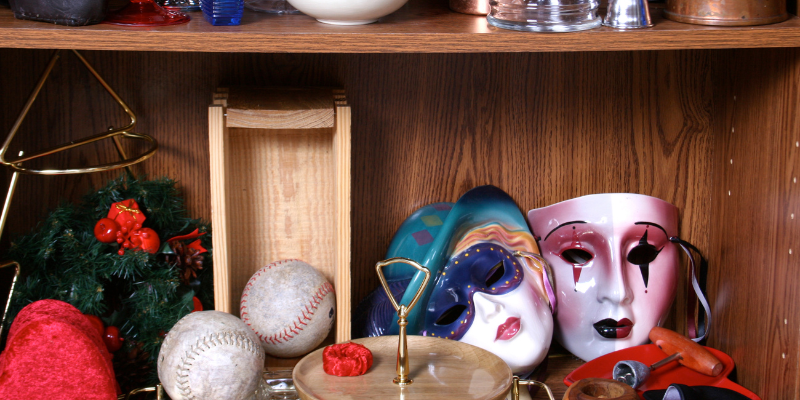
Glowforge Pro
The Glowforge Pro is one powerful 3D laser printer that has a built-in laser for engraving and cutting many materials. We know shows run on tight schedules, and the Glowforge Pro is fast enough to keep up—it can complete the average print job in only 12 minutes. Its user interface is both powerful and intuitive, making it accessible for cast and crew members of many ages.
We’ve chosen the Pro model for theater classes because of its Passthrough feature. Students can use the Passthrough to print with thicker and longer materials, which is ideal for bigger set pieces like furniture or backdrops. Best of all, the Glowforge Pro is compatible with a massive range of materials. Like many 3D printers, it easily handles wood, metals, and plastics, but it's also compatible with things like fabric, glass, stone, electronics, and even food, so you can make all sorts of designs.
MakerBot 3D Printers
MakerBot’s three main 3D printers, the SKETCH, METHOD, and Replicator+, are all great options for the classroom. Our favorite for theater is the SKETCH Large. MakerBot’s newer, larger setup for the SKETCH allows students to print bigger projects than ever, such as props for their upcoming show. With a chamber measuring 670 cubic inches, the SKETCH Large is perfect for helping shows go off without a hitch.
The larger SKETCH model fits up to 10 projects on one build plate, meaning you can complete pieces even faster. And, it is compatible with MakerBot Cloud Print, so students can send projects to their printer from anywhere. Is the printer across school grounds from the auditorium? Do the theater students have to share a printer with the biology students? Not to worry; they can simply send files directly to the 3D printer from MakerBot’s online dashboard—no installation required.
LulzBot 3D Printers
LulzBot’s award-winning TAZ Workhorse is one of the most reliable, long-lasting, and affordable solutions for 3D printing. It’s been called the easiest desktop 3D printer, so there’s no steep learning curve to hold up fast-paced theater productions. Rather, the LulzBot team tests each Workhorse printer before shipping, so you can set it up right away.
This newest generation of LulzBot printers features a belt-driven Z-axis for eliminating imperfections from misalignment, a common issue with printers. And, it’s compatible with over 35 materials, including flexible TPE filaments, increasing the potential functions of student prints. For theater, the LulzBot printers are a great option for affordability and flexibility without sacrificing quality.
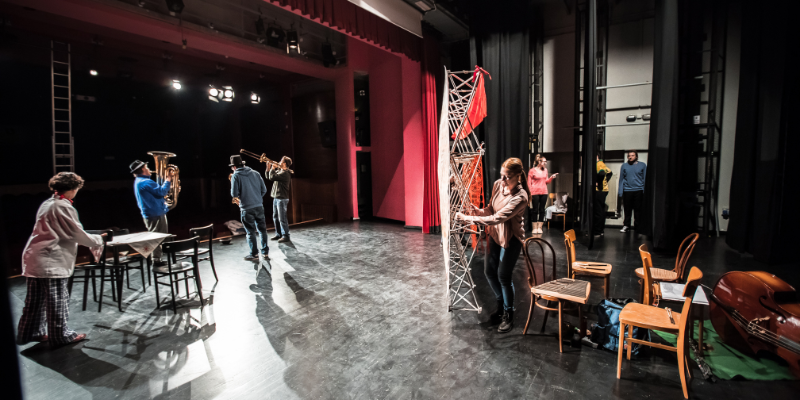
Maker tools make you pop-u-lar
Theater is all about making—writing and memorizing a script, finding a cast, blocking and choreographing, building a set, and more. Putting together a production from a script and a vision involves exactly the same creative thinking kids use in makerspaces. Using maker tools in theater can boost innovation and problem-solving abilities while helpfully contributing to production. Here’s our selection of the best maker tools for use in school theater programs and productions.
Cricut machines
If your theater class doesn’t need a full-blown 3D printer, the Cricut cutting machines can perform several similar functions. They can cut, deboss, engrave, score, and more. Their newest model, the Cricut Maker 3, cuts over 300 materials with different thicknesses and strengths, from paper to leather. It’s also compatible with 13 different tools, like the Rotary Blade and Scoring Wheels, to customize its cutting abilities.
There's also a free Cricut companion app for Windows, Mac, iOS, and Android devices, helping students to easily create designs. The app includes an image library and provides students with the ability to draw, use various fonts, and choose from hundreds (free) or thousands (premium) of ready-to-print projects.
The MakeDo Kits
For younger students, low-budget productions, or those committed to resourcefulness, both the MakeDo Discover and Invent kits are perfect for set and prop construction. MakeDo kits make it easy to safely cut and design almost anything out of cardboard. The Invent Kit includes nearly 400 tools, like saws, “scrus,” and “scru”-drivers, while the Discover Kit’s 40+ tools still offers an extensive assortment for starting out.
As a recyclable and reusable material, cardboard will work perfectly for this type of construction. It’s strong and flexible, especially with MakeDo’s helpful tools, and it can be found nearly anywhere. Plus, since it’s so accessible, mistakes are easy to fix—just grab yourself a new piece. It’s even possible for kids to combine cardboard construction with 3D printing projects by using printed hinges, brackets, and screws, for which the MakeDo team provides free pre-designed files. With the MakeDo kits, you can easily make cardboard construction for the theater smoother and more effective.
Bare Conductive Electric Paint
As anyone who’s worked in a theater can tell you, there’s a lot of paint involved. Bare Conductive’s Electric Paint can give plain old paint a bit of a boost. It’s just like other water-based paints, with the added feature of being able to conduct electricity when dry. It also works on almost any material, including paper, plastic, electronics, and, yes, walls.
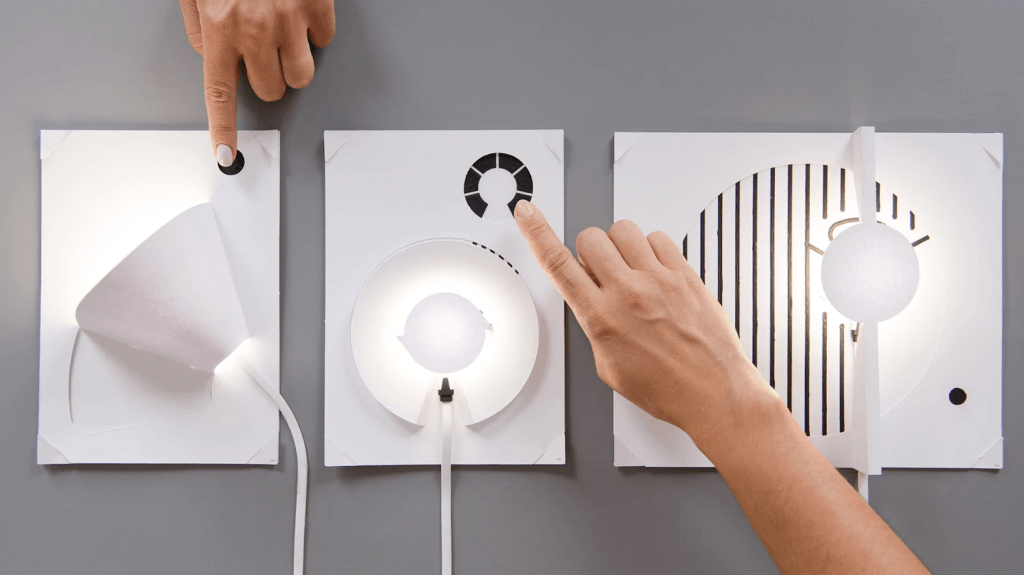
Students can also combine Electric Paint with the Bare Conductive companion kits to create interactive murals, painted instruments, light features, and a lot more. With accessories like the Touch Board and the Interactive Wall Kit, they can unlock new applications for Electric Paint in theaters. They can use the Lamp Kit, for example, in creating a touch-activated lamp triggered by the paint. An actor could touch the set in one place and cause a light to glow from another place on stage, creating an immersive and unique effect. Bare Conductive’s paint and accessories help create a perfect opportunity to creatively elevate set design.
The Padcaster multimedia solutions
Since online sharing is increasingly video-based, it’s become almost essential to film at least part of school productions. Besides, plenty of parents will want to rewatch their child delivering their iconic monologue for years to come. With the Padcaster Starter Kit, you can transform an iPad into a mobile studio for filming.
The Starter Kit includes the microphones, a wide-angle lens, a tripod, a helpful storage and transportation backpack, and more. Whether you're hoping to livestream productions, film auditions for review, or define areas of improvement, this kit helps a ton.
Coding’s role in theater programs
The arts and the sciences are both essential fields in their own right, but what happens when you combine them? Bringing coding into the theater can expand student views of what's possible. Perhaps one student loves musicals but feels too uncomfortable singing—joining the crew as a programmer could help them get involved without being onstage. Or maybe other kids struggle with coding but do like performing. Showing them how coding connects with their passion for theater may motivate them to keep trying to nail down a difficult skill. Beyond that, using coding in the arts and humanities helps students make connections and think inventively, skills they can use in their own lives and in future careers.
The Tello EDU Drone
If you don’t want to film your production from afar with the Padcaster equipment, you can choose to get up close by using a unique, programmable drone instead. The Tello EDU Drone is small, safe for indoor flying, and can capture photos or video with its camera. It’s easy to control the drone directly through the app, or students can choose to program the flight patterns themselves.
Even if the Tello won’t be used for filming, it’s still a great addition to a theater program. You could attach a light to the drone to increase spotlight mobility or provide star and moon effects onstage. Or, students can dress the Tello up as a bird, fairy, faraway plane, or other prop to add more realism. Plus, by programming the drone’s flight path, students can get practice with valuable coding skills and creative thinking.
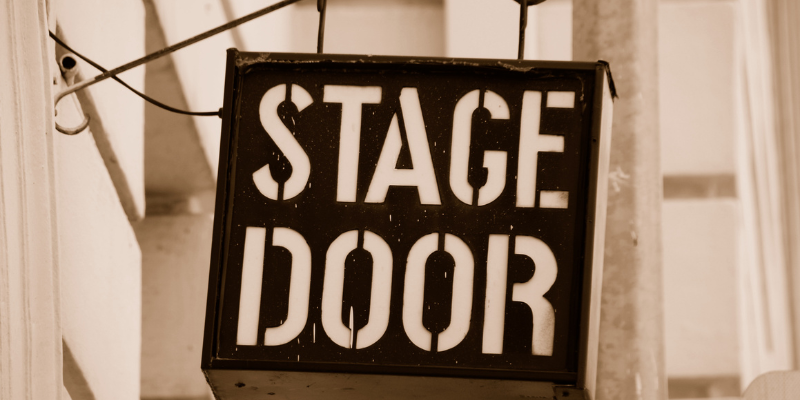
Theater in the 21st century
Bringing modern technologies into the classic art of theater can be a challenge, but these dynamic STEAM tools can help streamline the production process. Maybe you’re using 3D printers for building set pieces or props, filming with drones or iPad accessories, or constructing your designs with maker tools. Or, perhaps you're interested in emphasizing the “A” in STEAM by incorporating coding into your theater program. No matter your program’s size or grade level, there are tools to help take your production to the next level.
Contact us for more information or to request a quote for your theater program. And don’t forget to follow us on Twitter and Instagram for all of our latest news and product announcements.



